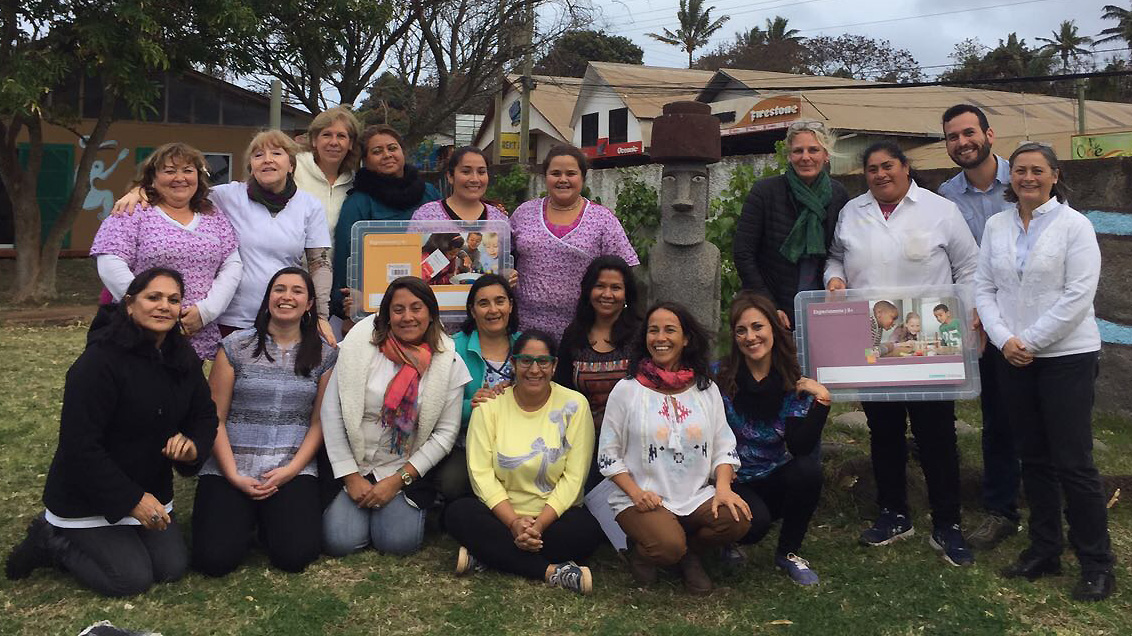“Iorana” – this is the word that the residents of Rapa Nui exchange with one another and visitors on their island. It means both “Hello, good day” as well as “good-bye.” Easter Island is an isolated speck of land located in the middle of the vast South Pacific Ocean: 3,700 kilometers and a five-hour flight from the coast of Chile. The island’s residents may live far off, but they are in the heart of it when it comes to education for sustainability. It is an existentially critical issue for this secluded island.
The Siemens Foundation recently teamed up with the University of Chile to launch the foundation’s international educational program Experimento on Easter Island and at the Lorenzo Baeza Vega School in Hanga Roa. In a multi-day workshop, employees from the University of Chile trained 19 highly motivated preschool and elementary school teachers to use Experimento in their own classes. The practical approach of this educational program fits perfectly into the teaching and learning philosophy used on Rapa Nui. Children are primarily taught outside the classroom on the island, and teachers generally draw on phenomena and elements from the natural environment in their instruction. Collecting and examining mussels or measuring pH levels on the beach or in the volcanic lake: the range of subjects and the form of instruction can be effectively integrated into the Experimento program.
Under the agreement with the mayor of Rapa Nui, Experimento can be adapted in terms of content and language to meet local needs. Combining language and culture in connection with STEM is the joint development goal of teachers, communities and the two partners Universidad de Chile and Siemens Stiftung.
“Experimento fosters the scientific and technical interest of children and adolescents. It helps them understand their own environment and the interplay of global challenges, particularly in terms of the sustainable development of the island,” said Ulrike Wahl, who is responsible for Latin America at Siemens Stiftung.
Education for sustainability: Experimento introduced in Rapa Nui

In August 2017, the educational program Experimento started on Rapa Nui.
© Siemens Stiftung, ECBI
© Siemens Stiftung, ECBI


